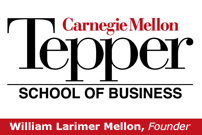William Larimer Mellon, Founder
Schenley Park
Pittsburgh, Pennsylvania 15213-3890
United States of America
Pierre Jinghong Liang
Associate Professor of Accounting
Financial Statements of Banking Industry
Tepper School of Business
Carnegie Mellon University
The main goal of the course is to provide students with an in-depth understanding of how financial reports provide unusually accurate and detailed (but not perfect) information about the risks and performance of these financial institutions. Their financial statements increasingly are based on fair value accounting and their financial reports include increasingly extensive risk and estimation sensitivity disclosures. Both fair value accounting and risk and estimation sensitivity disclosures are necessary ingredients for financial reports to convey financial institutions’ risk and performance in today’s world of complex, structured, value and risk-partitioning financial instruments and transactions. While financial institutions often report imperfect (or worse) fair value measurements and risk and estimation sensitivity disclosures, careful joint analysis of the information they do provide invariably yields important clues about their risks and performance.
While this course is most relevant to students interested in financial institutions, much of the accounting material also pertains to varying extent to other types of firms. For example, many firms securitize their accounts receivable or hedge their commodity, interest rate, or foreign exchange risk using derivatives..
